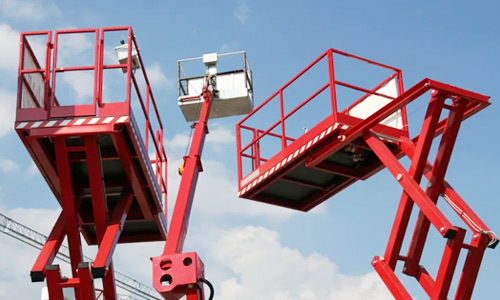Understanding the Benefits and Applications of Stationary Scissor Lifts in Manufacturing and Construction
Jul 11,2025

Stationary scissor lifts are vital tools in the manufacturing and construction sectors, designed to elevate personnel and equipment to considerable heights. Unlike mobile lifts, stationary scissor lifts are fixed in place and typically offer enhanced stability and lifting capacity. Their robust construction and reliable performance make them an essential asset in various applications, from assembly lines to high-rise building projects.
One of the primary advantages of stationary scissor lifts is their ability to provide a large working platform. This expanded area allows multiple workers and tools to operate simultaneously, improving efficiency and collaboration during tasks such as installation, maintenance, or inspection at elevated levels. Furthermore, their design usually incorporates safety features such as guardrails and non-slip surfaces, ensuring that operators can perform their duties with reduced risk of accidents.
In terms of versatility, stationary scissor lifts can be customized for specific tasks. They can be equipped with additional features, such as power outlets, light fixtures, or specialized platforms, catering to the unique requirements of different work environments. This adaptability makes them suitable for a wide range of industries, including manufacturing, warehousing, and construction.
Another significant benefit of stationary scissor lifts is their ability to handle heavy loads. With various models available, these lifts can typically support substantial weights, making them ideal for lifting heavy machinery, materials, or equipment that might otherwise be challenging to manage at height. It is essential to choose a model that meets the specific load requirements of your tasks to maximize safety and efficiency.
Moreover, stationary scissor lifts are generally easier to operate compared to other aerial work platforms. With simple controls and intuitive operation, trained personnel can navigate these lifts with confidence, reducing downtime and enhancing overall productivity. Proper training and adherence to safety protocols are crucial to ensuring that operators can utilize these tools effectively.
When considering the implementation of stationary scissor lifts in your operations, it is essential to assess factors such as lift height, load capacity, and the specific tasks they will facilitate. Understanding these parameters will allow you to select the most suitable model for your needs, ultimately contributing to a safer and more productive work environment.
In summary, stationary scissor lifts are indispensable in the manufacturing and construction industries, offering stability, versatility, and safety for elevated work tasks. By enhancing productivity and providing a reliable lifting solution, these machines play a crucial role in modern engineering and construction projects. As businesses continue to prioritize efficiency and worker safety, the relevance of stationary scissor lifts is likely to grow, making them a key consideration for any organization involved in high-altitude operations.
One of the primary advantages of stationary scissor lifts is their ability to provide a large working platform. This expanded area allows multiple workers and tools to operate simultaneously, improving efficiency and collaboration during tasks such as installation, maintenance, or inspection at elevated levels. Furthermore, their design usually incorporates safety features such as guardrails and non-slip surfaces, ensuring that operators can perform their duties with reduced risk of accidents.
In terms of versatility, stationary scissor lifts can be customized for specific tasks. They can be equipped with additional features, such as power outlets, light fixtures, or specialized platforms, catering to the unique requirements of different work environments. This adaptability makes them suitable for a wide range of industries, including manufacturing, warehousing, and construction.
Another significant benefit of stationary scissor lifts is their ability to handle heavy loads. With various models available, these lifts can typically support substantial weights, making them ideal for lifting heavy machinery, materials, or equipment that might otherwise be challenging to manage at height. It is essential to choose a model that meets the specific load requirements of your tasks to maximize safety and efficiency.
Moreover, stationary scissor lifts are generally easier to operate compared to other aerial work platforms. With simple controls and intuitive operation, trained personnel can navigate these lifts with confidence, reducing downtime and enhancing overall productivity. Proper training and adherence to safety protocols are crucial to ensuring that operators can utilize these tools effectively.
When considering the implementation of stationary scissor lifts in your operations, it is essential to assess factors such as lift height, load capacity, and the specific tasks they will facilitate. Understanding these parameters will allow you to select the most suitable model for your needs, ultimately contributing to a safer and more productive work environment.
In summary, stationary scissor lifts are indispensable in the manufacturing and construction industries, offering stability, versatility, and safety for elevated work tasks. By enhancing productivity and providing a reliable lifting solution, these machines play a crucial role in modern engineering and construction projects. As businesses continue to prioritize efficiency and worker safety, the relevance of stationary scissor lifts is likely to grow, making them a key consideration for any organization involved in high-altitude operations.
PREVIOUS:







